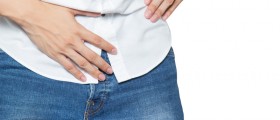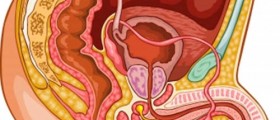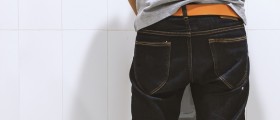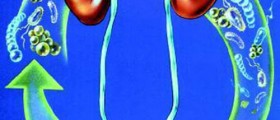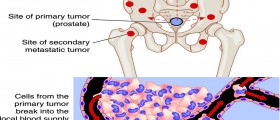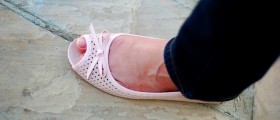My impression of Dr. Akhil Das is that he is soft spoken like a professor, patiently listen to my questions and didn't rush me nor look at his watch. I brought my test results form ultrasound (TRUS), urodynamic and cystoscopy with me and showed them to him. He explained what the results meant to me, such as the UD pressure curve showed a weak bladder, the TRUS image showed that have a sizable medium lobe. These tests costed about $6000 and my urologist had never spent time to explain the results to me even after I requested several times that he explained to me. My urologist (not dr Das) seems to always in a rush never seems to have time to explain or discuss my problems. Urologists are not created equal and I wish my urologist would just spend a small amount of his time to care about me. My experience with my urologists is that that he would not.
Below are Dr. Das's answers to my questions (to the best of my recollection). Notes are my comments.
General questions:
Q1) How long is the HoLEP operating time, morcellation time, hospital stay and catheter time?
Ans: I have a 25cc prostate. The total operating time (including morcellation) is 1 hr. Hospital stay is one day and catheter will be removed before I leave hospital . The short hospital stay and catheter time is because I am not a Phili resident, otherwise the hospital stay may be longer. The criterion For removing the catheter is able to pee.
Note: the hospital will only discharge patient to someone who knows the patient but not a uber driver.
Q2) What are the expected and unexpected complications as well as recovery time?
Ans:
short term (4-8 weeks right after HoLEP):
Loading...
My impression of Dr. Akhil Das is that he is soft spoken like a professor, patiently listen to my questions and didn't rush me nor look at his watch. I brought my test results form ultrasound (TRUS), urodynamic and cystoscopy with me and showed them to him. He explained what the results meant to me, such as the UD pressure curve showed a weak bladder, the TRUS image showed that have a sizable medium lobe. These tests costed about $6000 and my urologist had never spent time to explain the results to me even after I requested several times that he explained to me. My urologist (not dr Das) seems to always in a rush never seems to have time to explain or discuss my problems. Urologists are not created equal and I wish my urologist would just spend a small amount of his time to care about me. My experience with my urologists is that that he would not.
Below are Dr. Das's answers to my questions (to the best of my recollection). Notes are my comments.
General questions:
Q1) How long is the HoLEP operating time, morcellation time, hospital stay and catheter time?
Ans: I have a 25cc prostate. The total operating time (including morcellation) is 1 hr. Hospital stay is one day and catheter will be removed before I leave hospital . The short hospital stay and catheter time is because I am not a Phili resident, otherwise the hospital stay may be longer. The criterion For removing the catheter is able to pee.
Note: the hospital will only discharge patient to someone who knows the patient but not a uber driver.
Q2) What are the expected and unexpected complications as well as recovery time?
Ans:
short term (4-8 weeks right after HoLEP):
Loading...
I visited Dr. Das, a HoLEP surgeon and specialist on 9/25/18 at the Thomas Jefferson Univeristy Hospital in Philadelphia. I asked him many questions related to my upcoming HeLEP operation. Below are his answers.
My impression of Dr. Akhil Das is that he is soft spoken like a professor, patiently listen to my questions and didn't rush me nor look at his watch. I brought my test results form ultrasound (TRUS), urodynamic and cystoscopy with me and showed them to him. He explained what the results meant to me, such as the UD pressure curve showed a weak bladder, the TRUS image showed that have a sizable medium lobe. These tests costed about $6000 and my urologist had never spent time to explain the results to me even after I requested several times that he explained to me. My urologist (not dr Das) seems to always in a rush never seems to have time to explain or discuss my problems. Urologists are not created equal and I wish my urologist would just spend a small amount of his time to care about me. My experience with my urologists is that that he would not.
Below are Dr. Das's answers to my questions (to the best of my recollection). Notes are my comments.
General questions:
Q1) How long is the HoLEP operating time, morcellation time, hospital stay and catheter time?
Ans: I have a 25cc prostate. The total operating time (including morcellation) is 1 hr. Hospital stay is one day and catheter will be removed before I leave hospital . The short hospital stay and catheter time is because I am not a Phili resident, otherwise the hospital stay may be longer. The criterion For removing the catheter is able to pee.
Note: the hospital will only discharge patient to someone who knows the patient but not a uber driver.
Q2) What are the expected and unexpected complications as well as recovery time?
Ans:
short term (4-8 weeks right after HoLEP): less than 2 % transient incontinence (mostly stress); 1-2% scar tissue formation (which will block the urethra again); less than 5% post void retention; less than 5% blood in urine. [Note: a recent Korean study on HoLEP incontinence (defined as any form of leakage) reported a value of 17%, thus less than 2% UTI is a very low value.]
Long term: 88% retrograde ejaculation; scar tissue formation (which will result in weak stream). Dr Das knows of no way to reduce the chance of RE. I asked him if ejaculation preservation and HoLEP are not compatible with each other and he said yes. Through his assistant, I had also asked Dr. Chris DeBlasio (who is an HoLEP instructor based at Long island, New York) whether he would use Ejaculation Technique with HoLEP. His answer was not with HoLEP. This incompatibility also exists for doing enucleation using other techniques such as TURP or green light laser. Thus, if one wants the good result of HoLEP, RE can not be avoided.
Q3) what is the durability of HoLEP?
Ans: Dr. Das told me that he has been doing HoLEP for about twenty years and did thousands of HoLEP. The re-operation rate for HoLEP is 2-5% within 10 years, Dr. Das thinks it could last as long as 14 years. He said as a comparison the re-operation rate for Urolift is 35% within 5 years.
Note: 2-5% of re-operation rate within 10 years is consistent with other studies. For me, durability is more important than preserving ejaculation. Age greatly affects complications and affects non-linearly. I do not wish to have to do another BPH surgery when I am 5 years older.
Q4) When do I need to start the Kegel exercise and for how long?
Ans: the external sphincter is the main and the most important valve to control urine flow. Because of the urethra blockage, the external sphincter does not have to work hard because the stream is weak thus he recommends Kegel before the surgery to strengthen the external sphincter muscle. Kegel exercises the muscles near the pelvic floor by tightening and relaxing muscles near the anus.
Q5) What is the followup schedule?
Ans: right after HoLEP 4-6 weeks after that 4-6 months.
Existing conditions:
Q6) I have severe constipation, will HoLEP make it worse? If yes, how long will it last and how to alleviate it?
Ans: for patients without constipation problem, after HoLEP Dr Das normally prescribes 6 weeks of laxative plus stool softener. No narcotic pain killer because it will make constipation worse. The purpose is not to exert excess force on the prostate which is trying to heal. He will do the same for me, but nothing special.
Incontinence related questions:
Q7) Among his patients, after HoLEP What is the percentage of having transient incontinence and how long it took to recover?
Is the incontinence due to stress or urge?
Ans: see answers to Q7 below and Q2 above. TUI is less than 2%, mostly due to stress. He uses the same bladder neck preservation technique that Dr. Miller at Vanderbilt (TN) uses.
Q8) Will HoLEP damage the internal or external sphincters?
Ans:
he removes about 40% of the internal sphincter. He explained the removal to me using a prostate and bladder picture on his wall. I paraphrase his explanation below. Imagine 1/4 inch(or smaller, just as an example ) hole is drilled on the base of an avocado(the bladder) from the skin toward the interior. This hole connects the bladder to the prostate. The shell is the shell of the bladder and the meat of the avocado near the hole is the internal sphincter, smother muscle or Detrusor muscle. The overgrown prostate tissue which causes BPH actually connects to the meat of the avocado that is the internal sphincter muscle and the overgrown tissue is continuous. Thus to remove the prostate overgrowth, Das must remove a small portion of the avocado meat near the hole, the bladder neck. This will separate the overgrown from the internal sphincter. I asked him how much, he replied as little as possible. I asked again just how much, he finally replied he removes 40% of the internal sphincter. It is easy to see that some surgeons may remove the whole internal sphincter. The question of whether the removed internal sphincter will grow back remains unclear.
He also said that the main valve in controlling the urine flow is the external sphincter and that the internal sphincter is not absolute necessary because women do not have internal sphincter. So removing 40% of the internal sphincter does not compromising urine flow control. I found what he said very surprising and unsettling.
He also said that even Urolift to some degree is equivalent to removing a portion of the internal sphincter. He meant when the prostatic urethra is being pulled apart by the urolift clips, the bladder neck is also being pulled opened as well.
Q9) Does he use the two or three lobe enucleation technique and Has he heard of the en-bloc-no-touch technique?
Ans: when the medium lobe is fused together with lateral lobe, he will use two lobe technique else uses three lobe technique. He had tried the low power and one lobe techniques with dr. Peter GIlling in New Zealand twenty years ago, they didn't find them helpful in producing better results. He said that the penetration depth of Holium laser is only 4 mm so he didn't think using lower power would reduce complications.
Note: his opinion is at odd with the inventor of the low power en bloc no touch HoLEP technique.
Q10) What is Dr. MIller bladder neck preservation technique, does he uses it?
Ans: Das knows Dr. Miller, also see answer to Q7. I asked him three times if he is using the same bladder neck preservation technique. He answered three times "yes". I also told him that I would report his answer to this thread, would I be misquoting him, he said "no".
Retrograde Ejaculation:
Q11) Among his patients, after HoLEP What is the percentage of having RE? Is there anyway to reduce the chance of getting RE?
Ans: 88%. He knows of no way to reduce that percentage. See answer to Q2
Loading...
I visited Dr. Das yesterday and asked him about the internal sphincter and incontinence in detail. Based on my understanding I am sorry that your urologist (dr. Kimberley ?) might have indeed removed ur internal sphincter.
It is unclear to me that if the itnernal sphincter will grow back.
Loading...
Men and women are different so to say because women don’t have an internal sphincter does not justify taking what God did for man.
I have an appointment with Dr. Kranbeck soon. I am interested in pointing out the bladder neck issue to her.
Loading...
His answer to Q4 seems to fall in line with what I have been told by my local urologist as well, that the internal sphincter is mainly for blocking/controlling semen flow and not urine continence, that is the job of the external sphincter. It also makes sense as to why post HoLEP, our external sphincters are so weak and we end up with incontinence and require kegels and time to strengthen that external sphincter. Related to that btw, I am somewhat cautiously optimistic that I have made some recent progress on that front. The last week or 2 I have started to notice several days of little to no leakage. This is the first time in 9 months I can say this. I'm not saying I am 100% out of the woods yet, as I need more time with stress (lifting, etc.) and increased activity levels to still see progress, but am hopeful that I may finally be turning the corner to total continence. My fingers are crossed as I keep doing kegels daily.
So, are you going ahead with HoLEP with Dr Das? Just wondering what you've decided to do. In any event, wish you the best.
Loading...
Dr. Das told me that the larger the prostate The longer incontinence would last. Urs was 150cc. 9 months is not outrageous.
I am unsure of my prostrate size. The tech who did urodynamic said was 25cc whereas the tech who did ultrasound said was 50cc. Like I had mentioned, sadly my urologist did not want to spend time to explain results to me despite I spent about $5000 on all the tests. The attentive attitude of Dr. Das is rare. So I am grateful to u that u recommend him to me.
Some papers said that the internal sphincter does control urine flow. So at this time point, I am not sure what the real answer is. What is consoling is that all papers including Dr. Das said that the incontinence is transient that is given time, it will heal. It is unclear to me if that means the internal sphincter regrows to its original shape. After HoLEP removed the overgrowth tissue from the prostate, it left behind a cavity. If the internal sphincter is always opened, it would mean that that cavity is always filled with rurine. This seems odd to me.
I am scheduled to have HoLEP by dr. Das on Nov 19. Hope all will go well.
Loading...
I like what Dr. Das said which was he would remove the internal sphincter as little as possible.
But don't worry, all the papers I have read said that eventually incontinence would recover. Ur prostrate was 215cc, according to Dr. Das, it would a longer time to heal.
Loading...
Yeah I too am just not sure what to believe when it comes to these 2 sphincters. Seems very strange all these uros can't seem to agree. Maybe it is some sort of urologist feud we've stepped into! ;) As long as we all eventually recover and have god outcomes, that is all that ultimately matters I guess.
Loading...
My understanding is the internal sphincter is primarily responsible for controlling stress incontinence. The typ that comes from lifting, sneezes and laughing.
Loading...
I am glad to see that even for very large prostates incontinenence could eventually recover just like reported in several HoLEP studies. Incontinence caused by HoLEP indeeded is transient!
Loading...
I am feeling confident after hearing the good results from u both. These results make me feel that I have make the correct decision by choosing HoLEP. If HoLEP works well for 150 and 215cc prostates just like what have been reported in the literature , definitely it should work without any problem for a less than 50cc prostate which I have. The price to pay is retrograde ejaculation in exchange for the best functional outcomes and the longest durability.
Loading...
Just asking
Loading...
Dr. Das explained to me using a commercial prostate -bladder picture on his office wall. The bladder consists of a thin layer of external shell and a thick and uniform layer of Detrusor muscle. The Detrusor muscle near and around the bladder neck is the internal sphincter (a valve that could be closed by narrowing the bladder neck). Dr. Das said that the overgrown tissue which caused BPH extends thru the bladder neck and connects to the internal sphincter( Detrusor muscle). Just imagine some medium llobes actually so large that they extend or protrude into the bladder thru the bladder neck. To remove the overgrown tissue, he has to cut lose the tissue slightly beyond the bladder shell and into the internal sphincter (that is cut away a small portion of the internal sphincter at the interface of the shell and Detrusor muscle) so that he could separate the overgrown tissue from the internal sphincter. otherwise the enucleated overgrown tissue will just be hanging over the bladder neck and can not be separated. If the separation is made before the bladder neck, I believe that substantial blockage remains.
It is easy to explain with a picture and hard to explain with words.
If u could just google prostate images, u will see how in serious cases of BPH, the overgrown distorts the prostate and bladder neck. Then u will understand what I try to tell u.
Hope it helps.
Loading...



